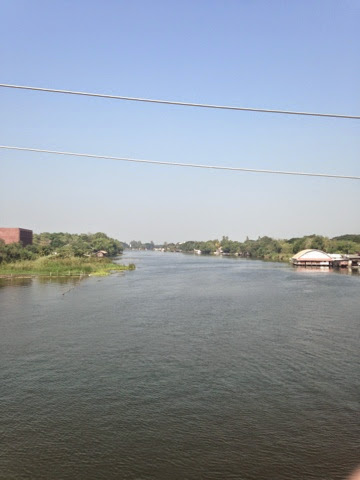This, and more, was documented by an extraordinary museum, the Hellfire Pass Museum, which was a joint project by the Australian and Thailand governments. As I walked along the railroad bed and contemplated the steep terrain and the work conditions, I felt immensely humbled by my own freedom from hardship and strife. I also could not help but to wonder how it is that humanity could get to a point where we engage in such brutality. The highlight of the museum for me was the contemplation deck where a clay bowl filled with water and a flower had been placed on a pedestal against the backdrop of the mountains. The bowl, made by a former surviving POW, symbolizes the positive values of life where war once raged. In the narration, the artist reminded us that the individual acts of horror are committed by people who also are victims, victims of governments and institutions that have gone wrong and abuse power. Later, this led to a sensitive, but important discussion about the American government, drones and more.
And then, it was time to "put in." Good news, the current was very fast and the water was high. Bad news, there was a gale force headwind the entire time. And so , we set out in double kayaks against the wind and paddled our hardest. I was fortunate to have Luka as my partner. Luka is young and very strong. But the currents had bizarre patterns (whirlpools) and the headwinds conspired. Despite our best efforts, I'm sure we paddled 2x the distance with our zigging and zagging across the river. Such was the case with everyone, and after 23 miles, we were completely and thoroughly exhausted. The conditions were so difficult that it was hard, if not impossible, to enjoy the scenery. I remember some beautiful scenery, but for the last 1.5 hours, what I really focused on was simply making it. Every now and then I would ask Luka, as we hit the shore or found ourselves turned backwards, what happened? Thankfully, we were in good company.
A highlight along the way was watching elephants bathing in the river after what was presumably a hard days work with tourists. Animals may not be able to talk, but there was absolutely no mistaking these elephant's communication--they were filled with joy as they dunked their heads and wallowed in the river.
Through group consensus, we cut our kayak trip short the next day. None if us wanted to face those conditions. As it turned out, the morning kayak ride from our campsite to our final destination was placid. After a picnic lunch at our final destination, we were finished with our activities and most of the group had going home on their minds.
I, on the other hand, was looking forward to another week of activity and rest of a different kind, a yoga/meditation retreat on the island, Koh Samui.
















No comments:
Post a Comment